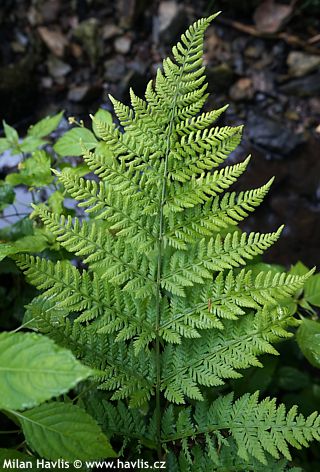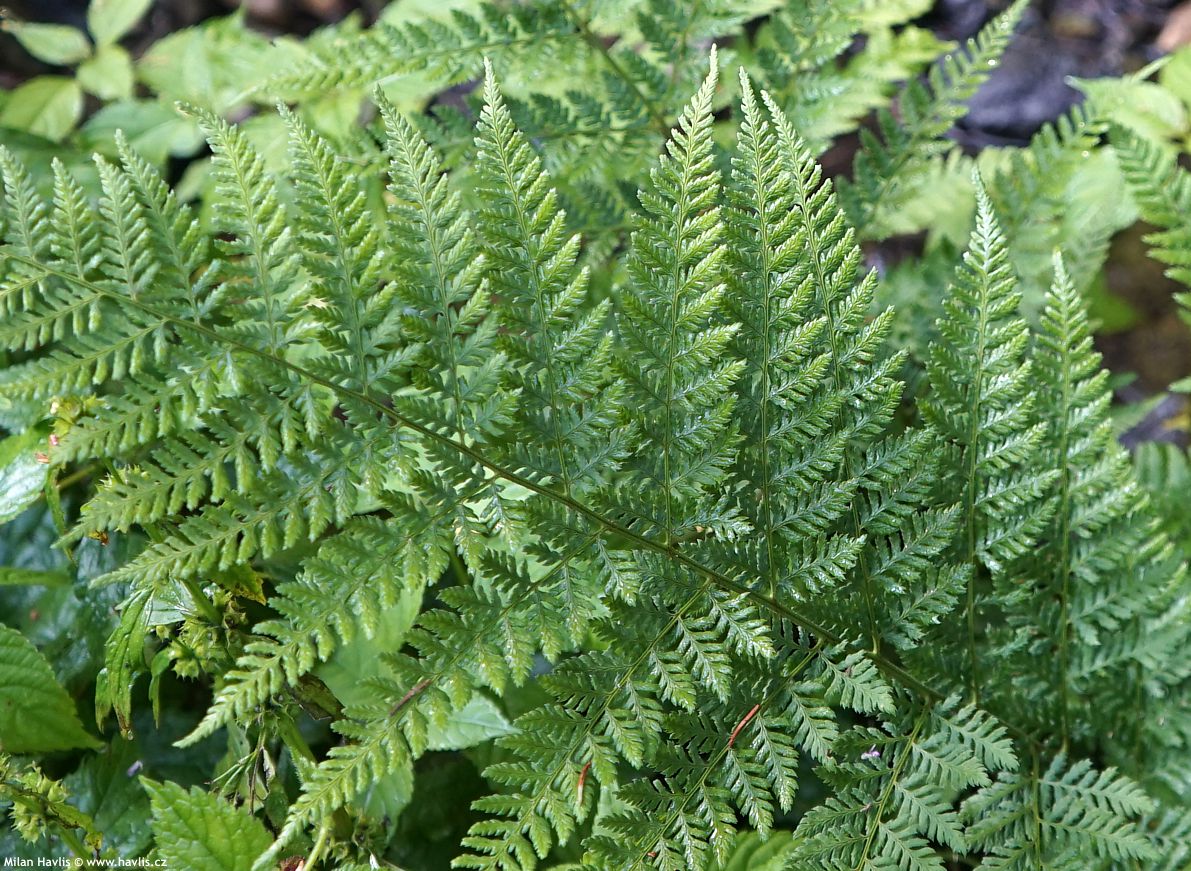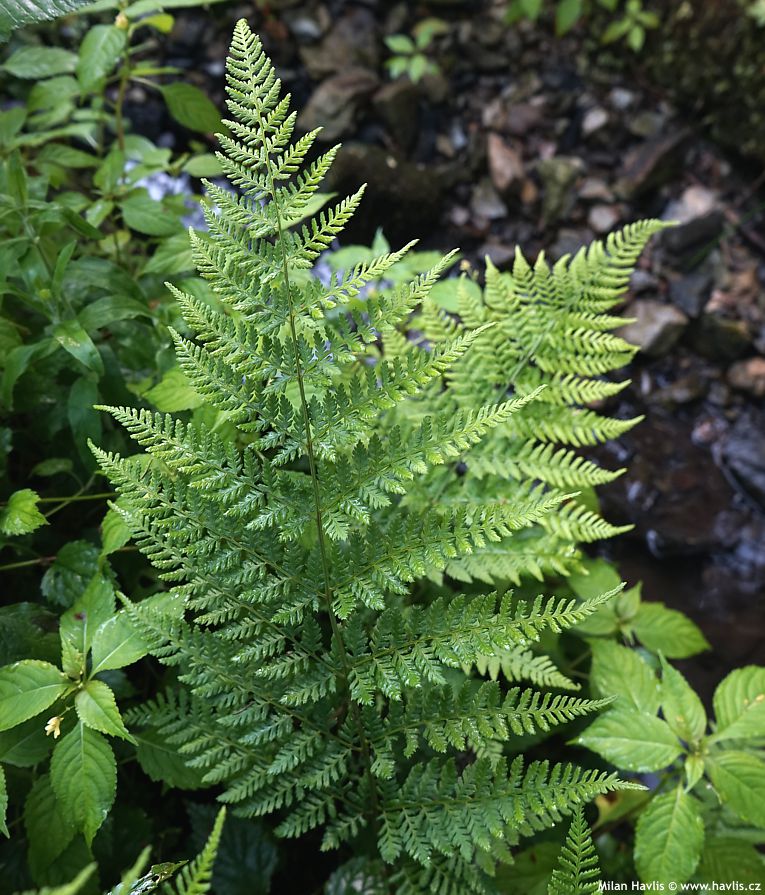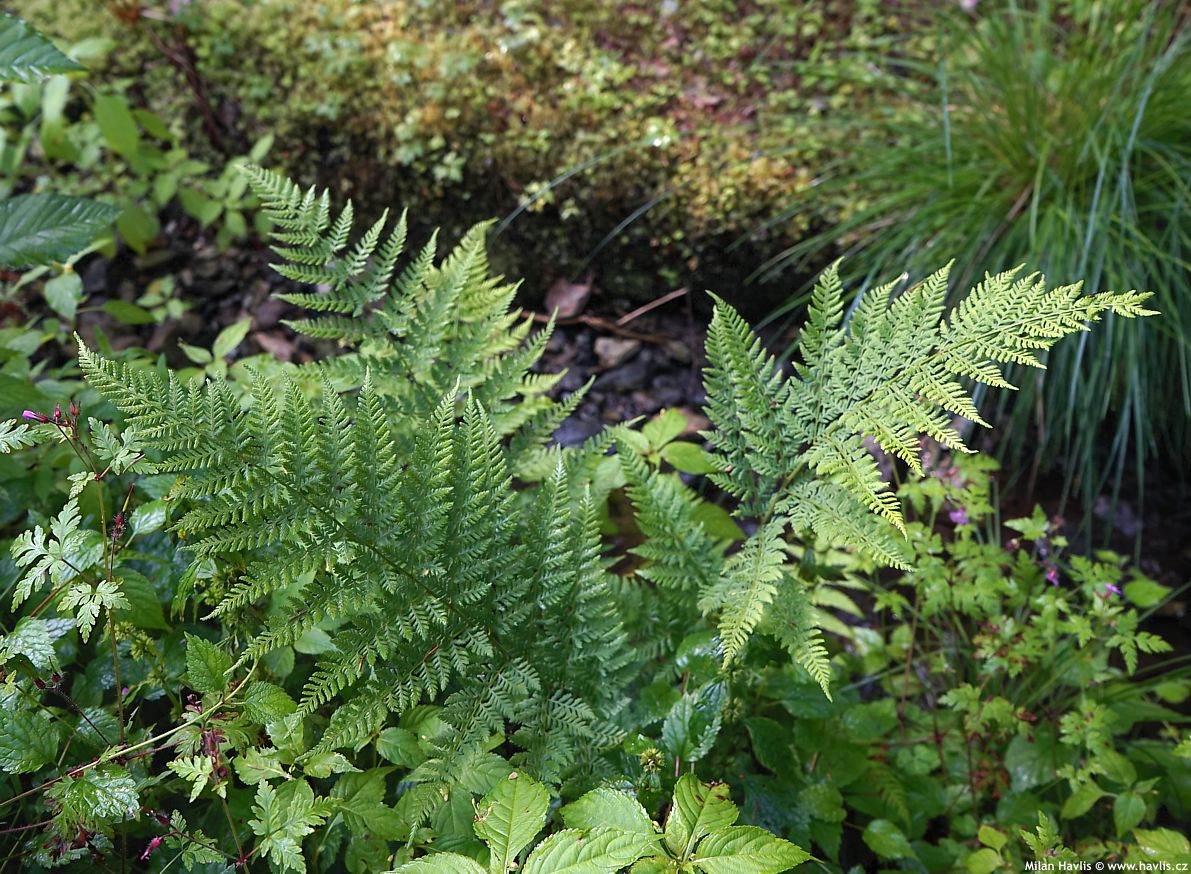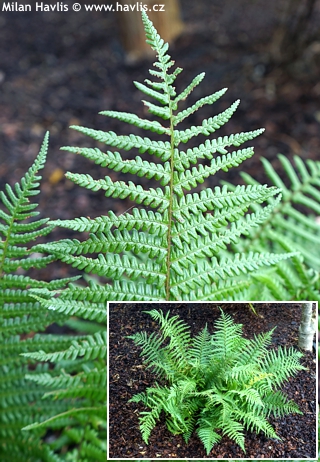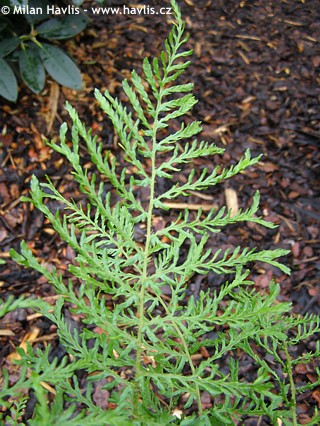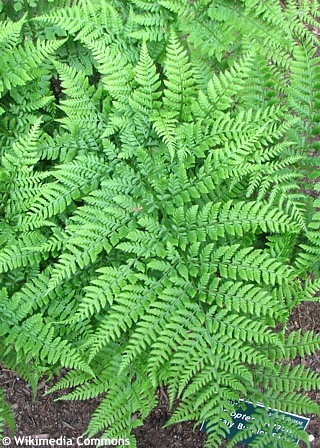Dryopteris dilatata broad buckler fern
Broad buckler fern is our native fern species that occurs from the lowlands up to the subalpine level. It is naturally found in a wide belt from N.W. Europe to E. Europe and N. Asia. It is widely adaptable and can handle both drought and slightly waterlogged habitats if it self-seeds or reproduces by rhizomes there. In our climate it often migrates from woodlands to the margins of residential areas in the countryside, where it slowly spreads in areas with low or no maintenance.
The botanical species of broad buckler fern forms beautiful plants with strong, semi-erect, robust, up to one-meter-long fronds which under ideal growing conditions can grow up to 1.5 m in length. They are so-called tripinnate, i.e., its individual leaflets are divided into tiny blades, they are assembled along shorter lateral midribs, and these are attached to vertical stems. Only young leaves are upright, and they arch beautifully as they mature. The leaves are deciduous.
Broad buckler fern is a reliable and undemanding species that even an amateur will not kill. It can cope with poor soils and thrives on neglect. It is happiest in filtered sunlight or partial shade, though, it can live in full shade, too, and copes with full sun unless its soil dries out. In the wild it is most often found under tall trees in areas with less air movement which provides more moisture, especially near woodland streams and on shady but not too dark slopes covered with moss, which prevents the soil from drying out. It is frost-resistant up to min. -29 °C, but it can certainly handle a few degrees lower. In the spring, remove all its leaves. Hardy to min. -29 ° C (USDA zone 5) and is expected to withstand a few degrees lower.
Last update: 17-06-2023

































